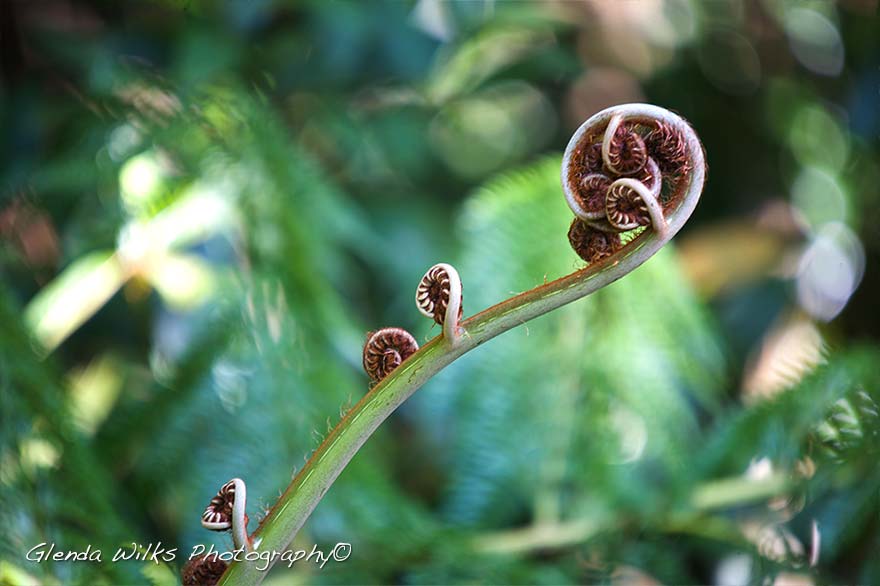Mt. Glorious Rainforest
Rainforest trees have had to adapt to living in a moist and often dark and wet environment. Many of the trees have root projections called buttresses as the rainforest topsoil is very shallow, buttresses are a means of stabilisation.
If you look at the wood inside a buttress you will see that it is very fibrous and so is probably used to store plant food. Another suggestion has been that these buttresses also help the plant 'breathe'; they naturally assist to support the enormous weight of the very tall trunks and foliage!
One particular plant that has adapted to life in the forest is the strangling fig Ficus watkinsiana. Figs are the favourite food of many rainforest birds and consequently many of their droppings contain fig seeds.
Sometimes these droppings will land in the fork or crevice of a tree. Should suitable conditions prevail the seeds will sprout and start growing. The roots grow towards the ground and the leaves towards the sun.
What normally happens is that the roots thicken and fuse to encase the host tree. As the host tree grows, it is effectively ringbarked by the fig roots. This is just one of the many ways plants have adapted to life in the rainforest.
Mount Glorious has a very unique ecosystem as the height of the mountain, together with the surrounding National Park provides a micro climate in which the high rainfall encourages the growth of rainforest species; this in turn attracts the birds and wildlife to the area.
It is so surprising to find this type of environment so far south of the tropical far north that we always associate with this style of rainforest. It is almost as if this small area of rainforest has somehow managed to cling to life in this magic ecosystem, only 45 minutes from Brisbane, the capital of the state!


